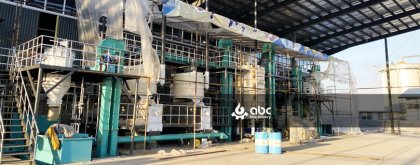
Profitable Coconut Processing Plant Setup
Core Steps in Coconut Oil Plant Capacity Planning
Efficient coconut oil extraction begins with smart capacity planning. Every coconut oil manufacturing plant must align its production goals with raw material supply, market demand, and available resources to maintain profitability.
Market Demand and Production Target Analysis
A comprehensive market analysis should consider projected annual demand, typically ranging between 5,000–30,000 tons per year for medium plants. Setting realistic targets, such as 15 tons/day for small-scale or 60 tons/day for large-scale operations, ensures balanced investment and output.
Before finalizing production targets, planners should evaluate raw coconut availability in the chosen region. For instance, regions producing over 100 million coconuts annually can sustainably support a 20–30 TPD (tons per day) extraction factory.
Raw Material Supply and Throughput Calculation
The throughput capacity, measured as the ratio between input coconuts and oil yield, is crucial. Average oil recovery is about 33% of copra weight. Thus, a plant processing 30 tons of copra per day yields roughly 10 tons of coconut oil. Ensuring steady copra supply over 300 working days defines the plant’s annual capacity potential.
| Plant Scale | Copra Input (TPD) | Oil Output (TPD) | Estimated Annual Production (Tons) |
|---|---|---|---|
| Small | 10 | 3.3 | 990 |
| Medium | 30 | 10 | 3,000 |
| Large | 60 | 20 | 6,000 |
Equipment Configuration and Shift Planning
Matching coconut oil extraction machine throughput with production goals avoids overinvestment. For example, an expeller rated at 1.5 TPH (tons per hour) running 16 hours daily covers a medium-scale operation. Multi-shift operations—usually two shifts of 8 hours each—help optimize utilization.
Automation levels also influence capacity planning. Integrating MES (Manufacturing Execution System) software improves scheduling accuracy by up to 18%, while energy management systems can reduce operational costs by 12–15% annually.
Typical Capacity Configuration Models
- Small-Scale Plants: 5–10 TPD, single expeller setup, suitable for local supply chains.
- Medium-Scale Plants: 20–40 TPD, multi-expeller lines with basic refining.
- Large-Scale Plants: 60+ TPD, automated lines with full refining, deodorizing, and packaging units.
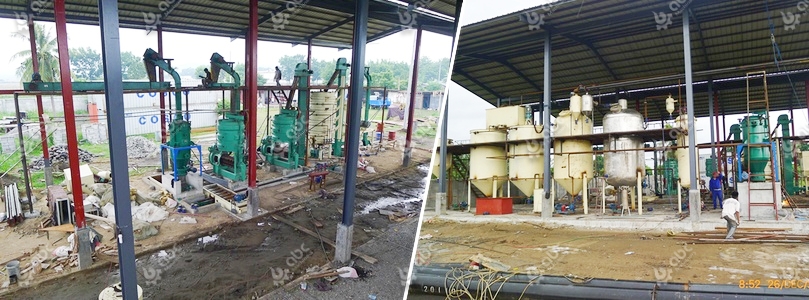
The 20-ton-per-hour coconut oil pressing and refining plant our company constructed in the Philippines
Enhance your plant’s throughput and profit margin — connect with our engineering team to design a capacity plan that delivers measurable efficiency gains.
Key Principles of Coconut Oil Mill Factory Layout Design
A well-designed coconut oil manufacturing plant layout determines operational efficiency, safety, and scalability. It should integrate spatial optimization, workflow continuity, and maintenance accessibility.
Production, Storage, and Packaging Areas
The production area typically occupies 40–50% of total space. For a 3,000 m² facility, allocate around 1,200–1,500 m² for pressing, filtering, and refining zones. Storage zones require humidity control to maintain copra moisture below 6%, while packaging areas should be adjacent to the dispatch dock for seamless logistics.
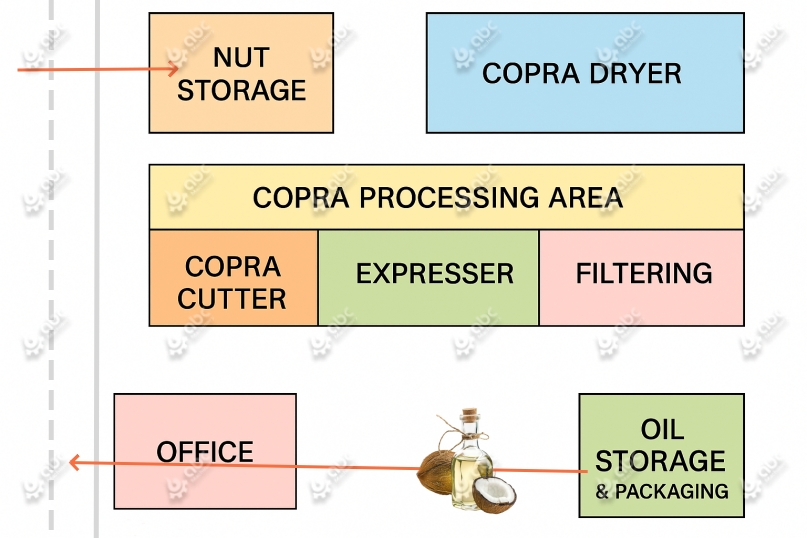
Simple Small Coconut Oil Mill Plant Layout Design
Material Flow and Safety Considerations
Material flow should follow a linear pattern from raw material input to finished product output, minimizing cross-contamination and handling time. Adequate ventilation and drainage systems ensure compliance with ISO 22000 standards. Fire prevention includes spacing tanks at least 1.5 meters apart and installing CO₂ extinguishers every 15 meters.
Energy-efficient design can save up to 20% in power costs. Integrating skylights and heat-resistant roofing materials can reduce internal heat loads by 4–6°C, improving worker comfort and safety. (Read More: Coconut Oil Processing Cost Analysis>>)
Partner with our facility designers to craft a factory layout that enhances production flow and meets all safety and compliance standards.
Coconut Oil Production Line Configuration and Equipment Layout Optimization
An efficient coconut oil production line setup depends on the precise arrangement of major machinery like expellers, centrifuges, and refining columns. Placing the copra crusher near the expeller minimizes material transfer by 30%, while the refining section should be isolated to maintain quality control.
Automation systems such as PLC (Programmable Logic Controller) can synchronize pressing and filtration, reducing idle time by 12%. Get your customized extraction system layout today and eliminate bottlenecks in your production process.
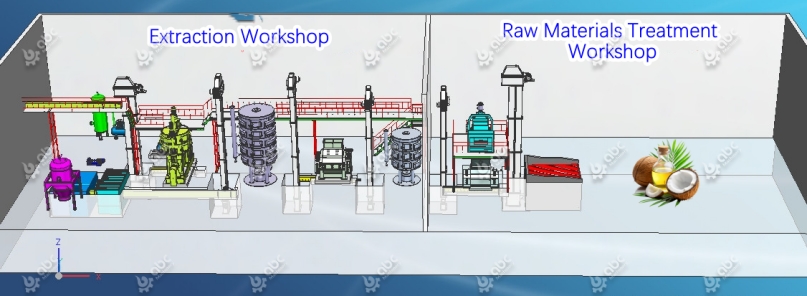
Equipment Setup in the Coconut Oil Mill Plant
Implementation Process for New and Expanded Coconut Oil Processing Plants
Developing or expanding a coconut oil manufacturing plant requires phased execution—from design to commissioning. Typical project cycles span 8–12 months, covering feasibility study, layout approval, equipment fabrication, installation, and operator training.
When expanding an existing facility, layout revisions must maintain material flow and safety spacing while increasing capacity by 25–40%. Work with our project engineers to execute your next coconut oil plant expansion with precision and minimal downtime.
Efficient coconut oil extraction relies on integrating capacity planning, smart layout design, and precise engineering execution. A well-planned coconut oil manufacturing plant ensures not just productivity, but long-term operational stability and profitability.
We receive enquiries in English, Español (Spanish), Русский язык (Russian), Français (French) and العربية (Arabic).Our professional team will reply to you within one business day.Please feel free to contact us!


 Screw Oil Press
Screw Oil Press Small Oil Mill Plant
Small Oil Mill Plant Small Oil Refinery
Small Oil Refinery Automatic Oil Press
Automatic Oil Press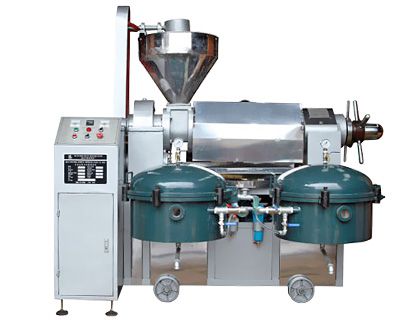 Multifunction Oil Press
Multifunction Oil Press Hydraulic Oil Press
Hydraulic Oil Press


![[Presidential Visit] Zimbabwe 30 Tons/Day soybean oil plant for Extraction and Refinery Was Successfully Completed](/uploads/allimg/soybean-oil-plant-press-refine-business-lp.jpg)

